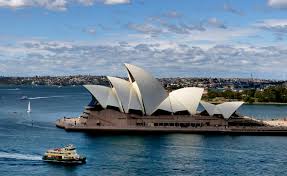The Sydney Opera House: A Global Cultural Landmark

Introduction
The Sydney Opera House, an architectural marvel and a UNESCO World Heritage site, is a symbol of Australia’s cultural identity and artistic innovation. Opened in 1973, this iconic structure attracts millions of visitors annually, making it a central hub for music, theatre, and the performing arts. Its relevance continues to grow as it adapts to the modern cultural landscape, making it not only a tourist destination but also a vital part of Sydney’s community.
Architectural Significance
Designed by Danish architect Jørn Utzon, the Opera House is renowned for its unique design, which features a series of large, sail-like roof shells that rise above a vibrant waterfront. The building’s construction faced numerous challenges and controversies, including budget overruns and political disputes. However, its eventual completion marked a pivotal moment in architectural history, showcasing the potential for innovative design in large public structures. The Sydney Opera House has since become a benchmark for architectural excellence worldwide.
Cultural Impact and Events
Since its opening, the Sydney Opera House has hosted a diverse array of events and performances. It is the home of several resident companies, including the Sydney Opera Company and the Sydney Symphony Orchestra. Every year, it serves as the backdrop for festivals, outdoor concerts, and cultural celebrations, such as the Sydney Festival and Vivid Sydney light festival. These events not only serve to entertain but also enhance the cultural fabric of Australia, promoting local artists and international talent alike.
Tourism and Economic Importance
The economic impact of the Sydney Opera House is substantial, contributing approximately AUD 775 million annually to the local economy. It is one of the most photographed buildings in the world and a vital contributor to the tourism industry, attracting around 8.2 million visitors each year. The Opera House has recently expanded its offerings, with guided tours and educational programs designed to engage younger audiences, further ensuring its place in the hearts of future generations.
Conclusion
The significance of the Sydney Opera House extends far beyond its stunning architecture. It stands as an enduring symbol of artistic achievement, cultural pride, and economic vitality in Australia. As it continues to host an expanding range of events and innovations, the Opera House is likely to remain a beacon of creativity and a testament to what can be achieved through collaboration among architects, artists, and the community. For residents and tourists alike, the Sydney Opera House will always be more than just a performance venue; it is an experience that embodies the spirit of Sydney.
